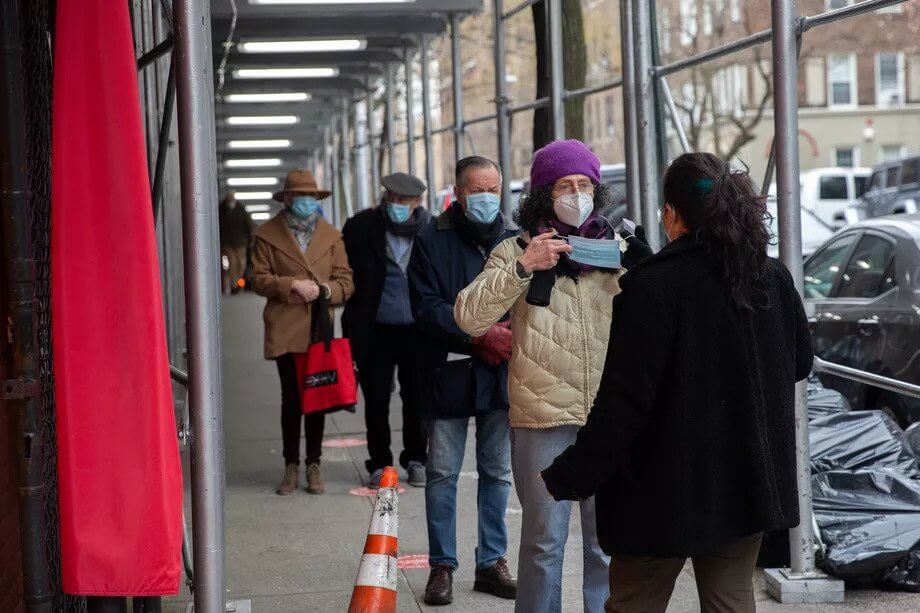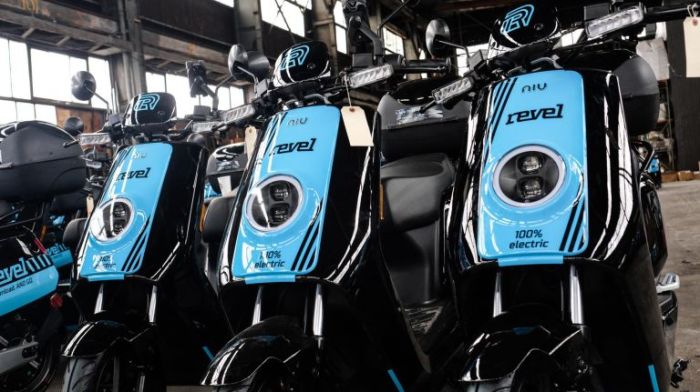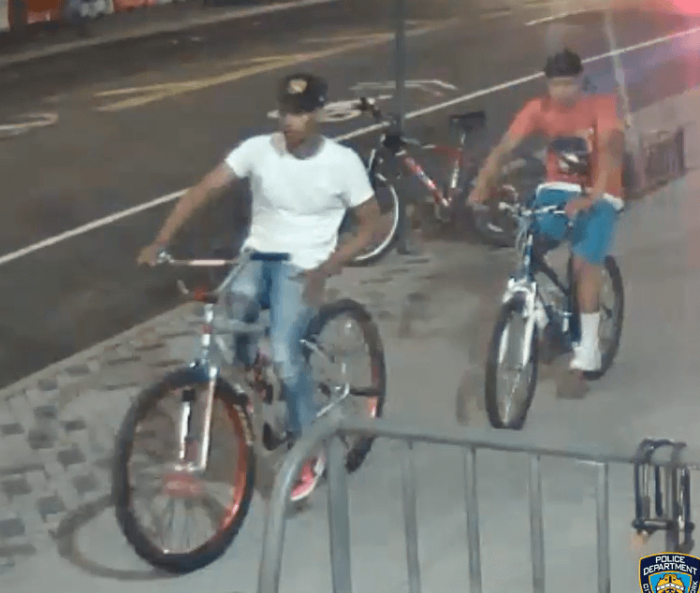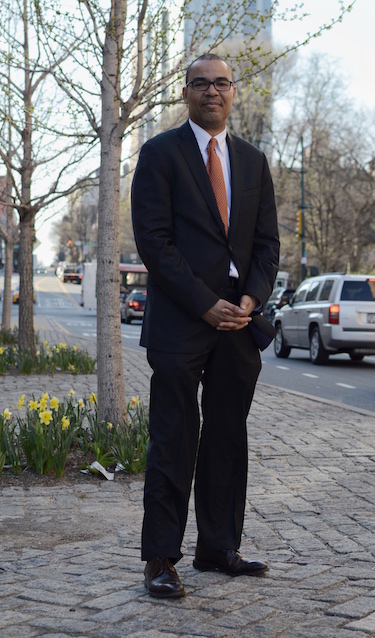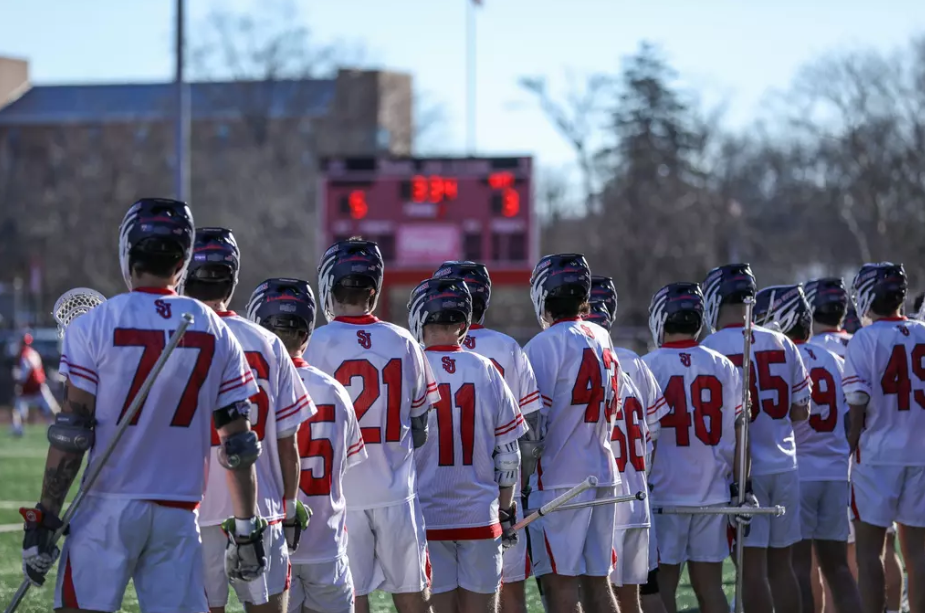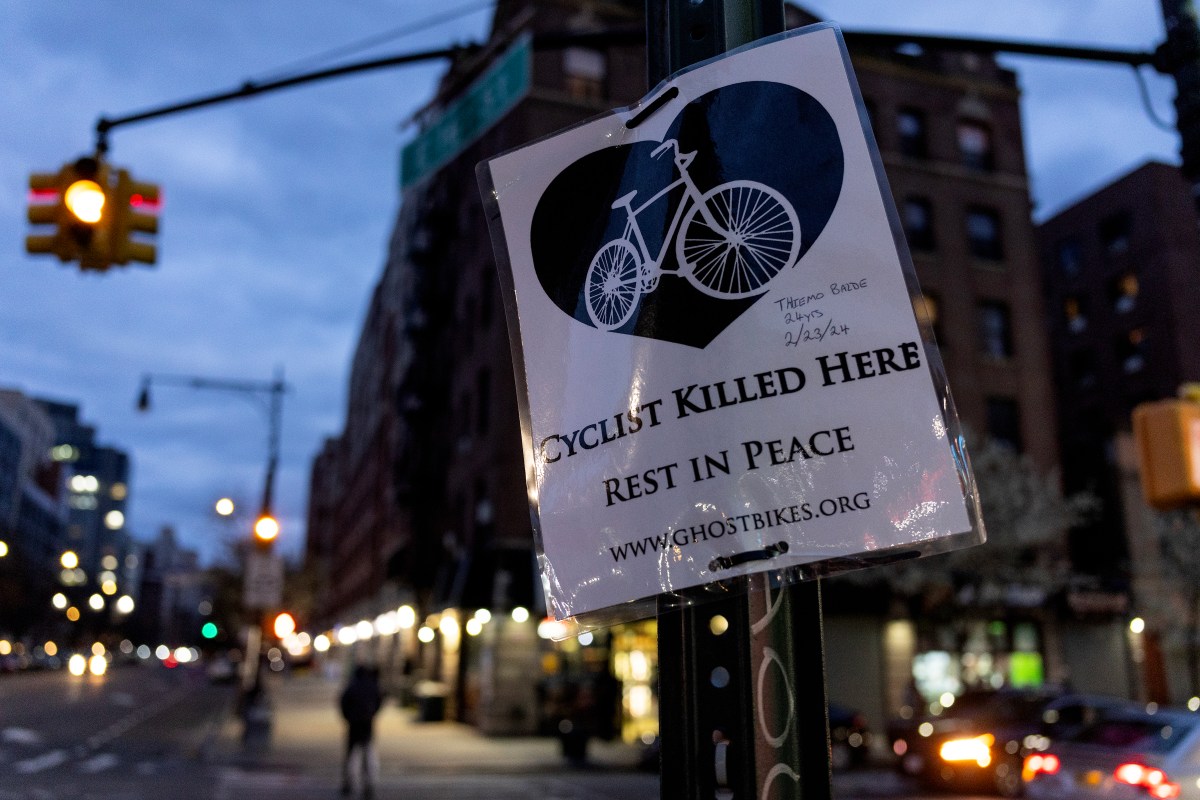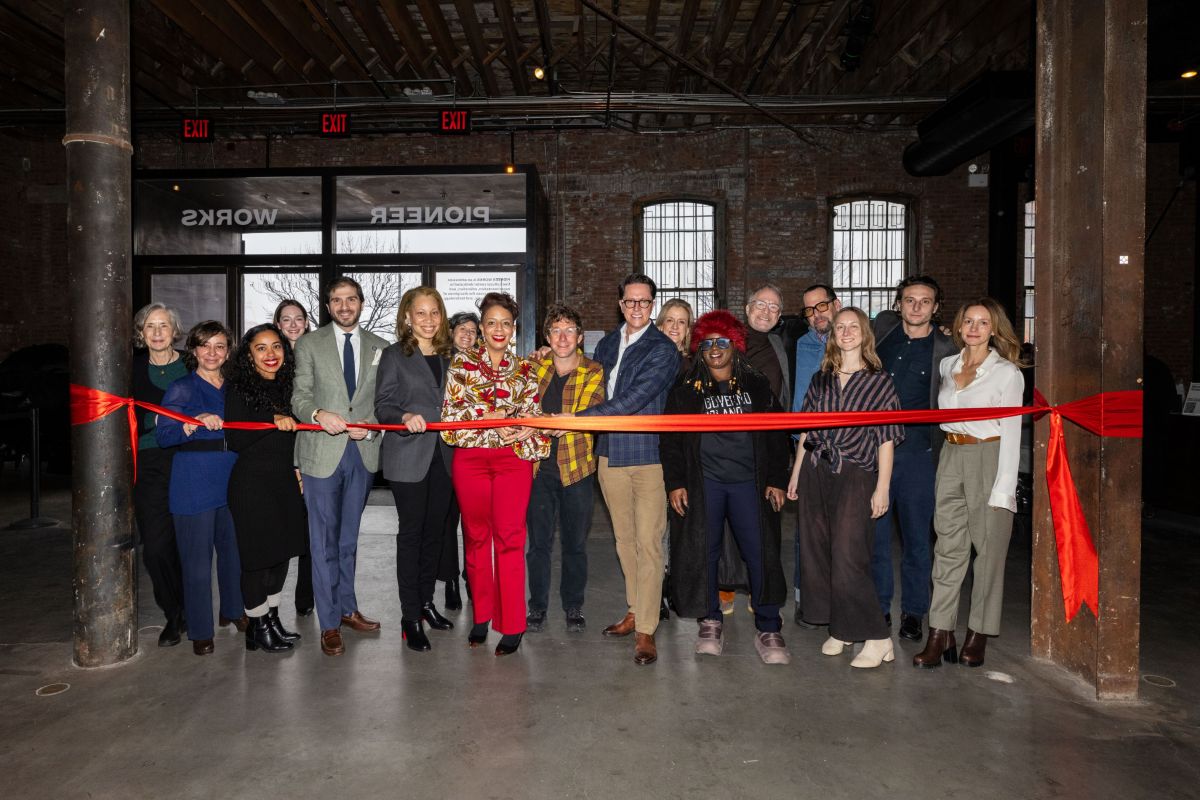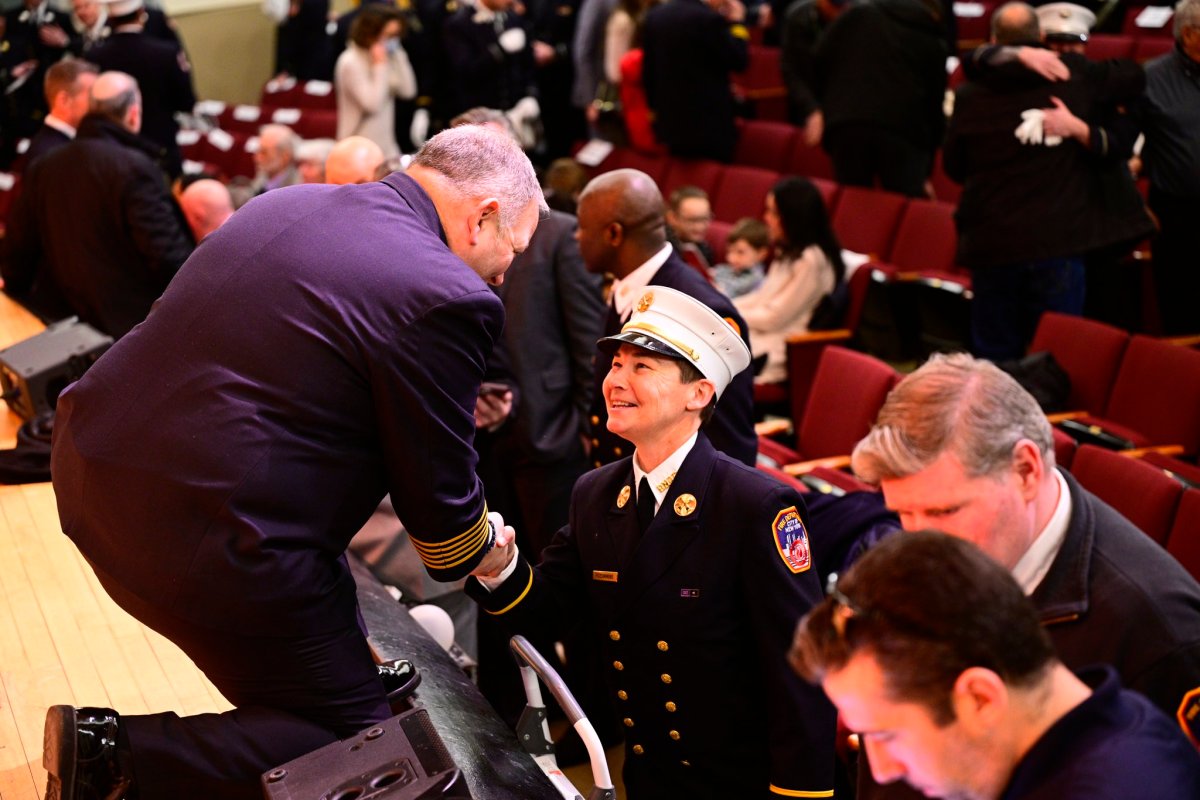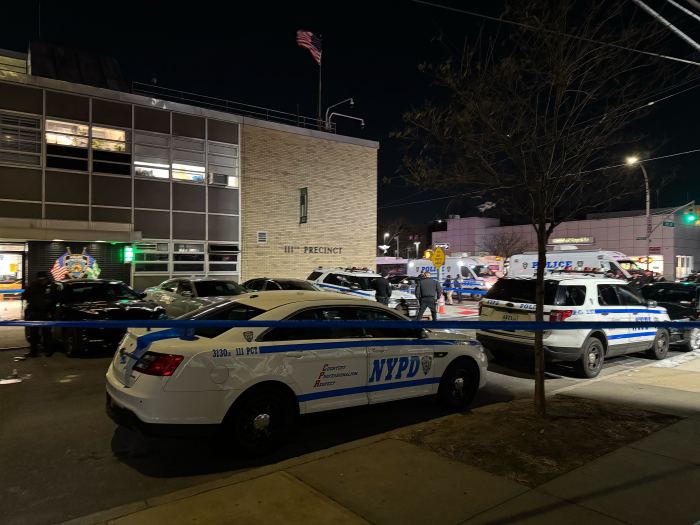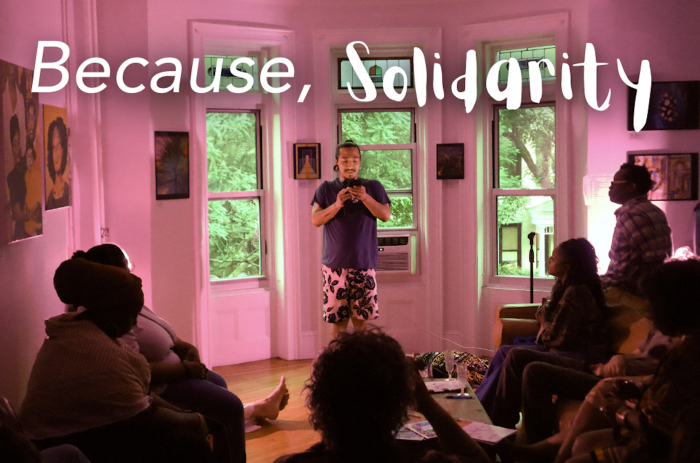By Josefa Velasquez, THE CITY. Additional reporting by Ann Choi.
This article was originally published on by THE CITY
Olga, age 76, woke up at 6 a.m. to make the trek from The Bronx to the Fort Washington Armory in Washington Heights Tuesday in hopes of getting the COVID-19 vaccine.
It marked her second day in a row showing up at the vaccination center, which Gov. Andrew Cuomo recently touted as helping fight the “forces of inequality.” Olga, who speaks Spanish, had repeatedly attempted to call multiple hotlines to make an appointment but couldn’t get through or the directions were in English only.
At the door, most people entering appeared to be white and unfamiliar with the neighborhood. Some asked security guards where they could find parking. Nylon Longchamp handbags and Burberry scarves stood out.
Outside of the site, run by NewYork-Presbyterian Hospital near its Washington Heights medical center complex, Olga encountered another language barrier: None of the handful of guides and security guards outside directing people spoke Spanish.
 Ben Fractenberg/THE CITY
Ben Fractenberg/THE CITYInstead, they asked this reporter to interpret for Olga and other Spanish-speakers who approached the Fort Washington Avenue armory in hopes of getting a coronavirus shot.
One guide explained that Olga needed an appointment to enter the facility. Olga had tried calling time and time again but “the process is difficult for older people,” she said.
She asked the guide, via THE CITY: Is there someone inside I could speak to who could help?
No, she’d have to make the appointment first, he replied, pointing at a number written on the top right corner of a document with vaccine appointment information.
“This is why people don’t get vaccinated,” an exasperated Olga said. “It’s too hard.”
‘So Many White People’
Dozens of others easily entered the armory Tuesday morning, arriving with appointments on printouts or phones.
A woman in a red winter coat said to one of the guides, “Hola, mamí. Vacuna de coronavirus?” pointing at her arm and flashing a piece of paper.
A guide gave a thumbs up and ushered the woman into the Armory.
But by and large, one would hardly know that Washington Heights is home to Little Dominican Republic or that 69% of its residents are Hispanic based on the people who poured into the Fort Washington Armory Tuesday and walked out with “I’ve been vaccinated” stickers.
THE CITY spoke to a dozen people in all. Of those, 10 said they lived outside the five boroughs — all suburbanites who are either retirees or work from home.
Among them was Sister Elaine Maguire, who crossed the Hudson River from Leonia, N.J., to get her first dose of the vaccine.
 Ben Fractenberg/THE CITY
Ben Fractenberg/THE CITY
Her doctors are all located in Upper Manhattan and a friend helped her schedule an appointment over the phone just days ago, she said.
“It’s my ticket to survival,” the 84-year-old nun added.
The Armory vaccination site is open to eligible patients, currently those over 65, as long as they have an appointment, according to New York-Presbyterian’s website.
(To schedule an appointment, eligible individuals have to register online by creating an account with Presbyterian, o aquí en Español, or call 646-697-VACC, which has an option for Spanish.)
THE CITY’s Tuesday morning tally was consistent with an earlier report from a doctor who said she’d volunteered to verify appointments at the facility.
Susana Bejar posted on Twitter Sunday that most of the people being served at the Armory weren’t from the neighborhood, or even from New York City.
“Simply put, I’ve never seen so many white people in Washington Heights,” Bejar tweeted.
Bejar could not be reached for comment.
In a statement, New York-Presbyterian said it’s working on an “outreach and engagement program” with local community groups to engage community members to “get as many members of our community vaccinated as quickly as possible.”
“This urgent and ongoing process is being undertaken by NewYork-Presbyterian in partnership with a number of community-based and faith-based organizations and other partners. We are focused on providing access, overcoming hesitancy and addressing persistent inequities that too frequently result in people not getting the care they need,” the statement said.
An Information Gap
THE CITY reported earlier this month that more than one in four of New York City’s scarce vaccine doses are going to individuals who reside outside the city.
Mayor Bill de Blasio has described them as essential workers, such as health care providers and educators, who keep the city running.
City and state health officials have not yet divulged details on who is getting vaccinated, and from what neighborhoods — a replay of events last spring, when the same agencies declined to report where COVID-19 was spreading.
After pressure from City Councilmember Mark Levine (D-Manhattan) and Brooklyn Borough President Eric Adams, a candidate for mayor, de Blasio is promising to release more details by the end of this week.
Briefing reporters later Tuesday morning, de Blasio said: “You’re going to see in those numbers, it’s been true from the beginning, substantial number of people who are not from the city, but who do serve the city and that’s absolutely appropriate.”
Quest for Equity
As heralded by Cuomo upon its opening on Jan. 14, NewYork-Presbyterian’s vast Columbia University Medical Center vaccination center is supposed to help ensure access to life-saving COVID vaccines to people ages 65 and over, no matter who they are.
“The COVID pandemic has highlighted pre-existing inequity in our society and our healthcare system — and as we fight against this virus, we also have to fight back against those forces of inequality,” Cuomo said in the announcement.
He added: “With partnerships like this, we are making sure New Yorkers of color aren’t left behind.”
A representative for the state Department of Health sent a statement to THE CITY after this story was published. “The entire focus of this project was to create a vaccine distribution point that would serve the Washington Heights community, and if that is not happening, it’s unacceptable,” said spokesperson Jonah Bruno.
“Our understanding from the beginning was that this site would vaccinate New Yorkers from Washington Heights, and we are immediately reaching out to NewYork-Presbyterian to figure out what is going on at this site site and ensure it serves this community.”
The moment the state initially announced in early January that New Yorkers 75 and older would be next in line to get a vaccine, Westchester couple Ann and Dennis immediately started making calls to schedule one.
“It was very hectic to make an appointment,” said Ann, 81.
 Ben Fractenberg/THE CITY
Ben Fractenberg/THE CITY
The pair, who declined to provide their last name, already have a vaccination appointment scheduled closer to home, at the state-run Westchester County Center, but it’s not until March.
On Saturday, they managed to book an appointment at the Armory, some 20 miles south of where they live, and plan to cancel their March date.
“I feel safer,” said Ann.
The pair are not the only Westchester residents who drove down to Upper Manhattan for a shot at the shot.
David, a 65-year-old retiree from New Rochelle, said he and his wife had appointments earlier this month. His wife was able to get her first dosage then but David’s had to be rescheduled for Tuesday because he needed a flu shot first.
“It’s remarkable how fast they were,” David said outside of the armory.
Freshly vaccinated, with a new president in the White House, change is on the horizon, David said, adding: “It feels really good.”
David found the appointment process frustrating, but believes he found a hack to the system. “Sunday is the best day to do it,” he said, with more appointments appearing to be posted on that day.
Doubled Death Rate
Both Cuomo and de Blasio have called getting the COVID-19 vaccine equitably distributed among the highest risk groups of people an urgent priority.
Black and Hispanic New Yorkers continue to die of COVID-19 twice as often as white New Yorkers, according to city health department data — a phenomenon unchanged since the first swell of fatalities last spring.
Hispanic New Yorkers make up the largest share of cases, hospitalizations and death among four groups tracked by the City: white, Hispanic, Black and Asian/Pacific Islanders.
Yet whether the vaccine is being distributed equitably is still a mystery.
De Blasio forecast Tuesday that the promised city statistics would show vaccinations lagging among “the communities hardest hit by COVID.” State officials say they’re still working on getting the data.
Los Angeles, Chicago and Miami have already released ZIP code summaries of who has gotten vaccinated so far. There, data so far shows affluent and predominantly white neighborhoods have received the bulk of available vaccines.
Ahead of the data release, Cuomo has been touting additional support to “strengthen fairness and equity” in the vaccine distribution process by announcing additional kits for NYCHA senior housing developments. On Sunday, he delivered online addresses to Black churches asking congregants to “trust the vaccine.”
 Ben Fractenberg/THE CITY
Ben Fractenberg/THE CITYDe Blasio has meanwhile preached about the need for more trust between health care providers and Black and Latino New Yorkers.
“What is so crucial here is building trust,” he said at Tuesday’s briefing. “You have to go deep into communities.”
Trust was not a problem for Juan Reyes — the only one of the vaccine visitors THE CITY interviewed who lives in Washington Heights. The 69-year-old said in Spanish that he didn’t have issues landing an appointment, since he’s a patient in NewYork-Presbyterian’s system.
He noted that no one needed to worry about getting the shot: the prick of the needle “doesn’t bother.”
THE CITY is an independent, nonprofit news outlet dedicated to hard-hitting reporting that serves the people of New York.



